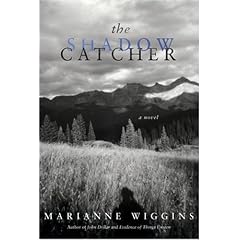I've been reading Kenny Fries' book
The History of My Shoes and the Evolution of Darwin's Theory. It says much about the experience of living with a disability.
Because there is so much written about that experience and disability in general which is fraught with assumptions and misinformation, it's refreshing and reassuring to see writing like this. I find myself taking deep breaths and feeling centered as I read the prose, remembering how it is when I'm around other people with disabilities.
I miss that experience for many reasons. One of them is that there's an awkwardness about how some non-disabled people relate to disabled people. There isn't the usual banter between us, but these strained questions about how I do things. It often makes me feel as if I'm on a stage or in a 24-hour disability simulation.
"But if you're a quadriplegic, how do you type?" "How do you get dressed , or go to the bathroom or get into your bed?"
My answer these days is to suggest that they go to YouTube, where there's a plethora of videos done by quadriplegics to illustrate these very things.
Less common are the nondisabled people who ask how my job is going or if I've seen the latest movie. Those conversations happen more frequently with my disabled friends.
On page 110, of Kenny Fries' book, he writes about how nondisabled people generalize about his sexuality based on knowing another disabled person. Fries tells a colleague who assumes that "people are very interested in how disabled people have sex" that most people don't think of disabled people as being sexual.
The book also discusses how "our culture demands explanations about most disabilities"and how disability becomes a story "with a hero or victim" and therefore a problem of the individual, "not a category defined by the society." The author explains how this keeps the "dialectic of normalcy" intact.
As I was reading this, a lightbulb went off. This is all so true - and so limiting to ways of relating. Not only are constant questions about what my story is regarding my disability annoying, they are intrusive. Complete strangers ask "What happened to you?" upon sight. Acquaintances paint me as a hero or victim, and then don't understand when I show no interest in their take on my life.
It's naïve to think this way of relating doesn't box people in. When I was seen as a hero, which often happened when I was playing wheelchair sports, the minute I mentioned I worked during the week as a professional, the reaction changed. "Oh, so this is just a hobby?" the person would ask, disappointed. The hero story apparently required a full-time commitment to chasing a little ball around a tennis court. This is how predictable reactions to disabled people can be and are.
I really wish more people would pick up Kenny Fries' book. I've barely touched the surface of what it contains. There is so much more in there for both disabled and nondisabled readers. He somehow managed to set aside any self-conscious voice as he writes about growing up with a disability, making decisions about medical surgeries, and his relationship to the shoes that allow him to navigate the world.
This even includes a piece about how a replacement pair of shoes are useless to him. If only some durable medical equipment providers would read this! Those of us with disabilities know what works for us. Although it's fine to try something new and improved, having that thrust upon us with no choice can leave us immobilized.
Luckily, relationships are more diverse than that. Yet I can't help but wonder, how refreshing it would be if more people would
pick up this book and begin to understand that
effectively navigating the world is not just a dream for the disabled, anymore than it is for the nondisabled.




